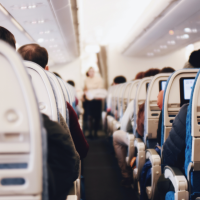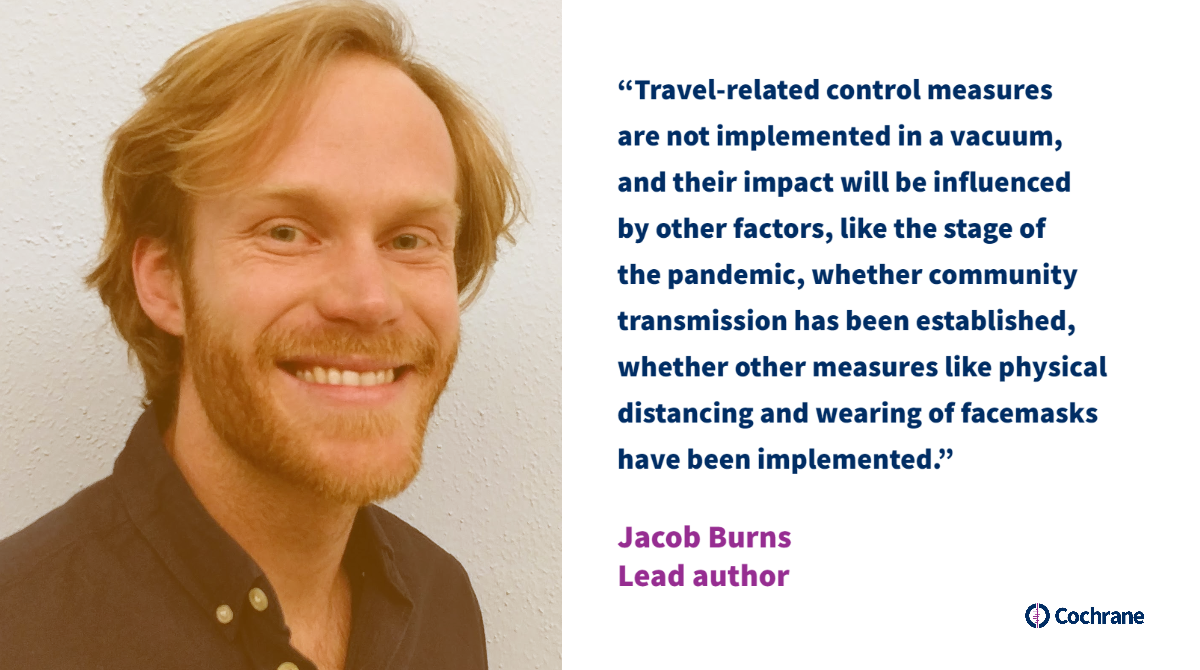
Can travel-related control measures contain the spread of the COVID-19 pandemic?
What are travel-related control measures?
To contain the spread of COVID-19, numerous countries have implemented control measures related to international travel. These include:
- complete closure of borders (i.e. a total ban on any border crossings);
- partial travel restrictions (e.g. restrictions on air travel only, or restrictions on travellers from certain countries);
- entry or exit screening (e.g. when travellers are asked about symptoms, examined physically, or tested for infection when leaving or entering a country);
- quarantine of travellers (e.g. when travellers have to stay at home or at a specific place for some time after crossing a border).
Some countries implemented similar travel-related control measures during the recent outbreaks of two related diseases, severe acute respiratory syndrome (SARS) and Middle East respiratory syndrome (MERS).
What did the authors want to find out?
The authors wanted to find out how effective travel-related control measures are in containing the COVID-19 pandemic. They also wanted to know about the costs of the measures and what effect they have on healthcare and other resource use, as well as potential negative effects, such as feeling isolated.
What the authors did
The authors searched for studies on the effects of travel-related control measures on the spread of COVID-19, as well as on SARS and MERS to provide supporting information. Studies had to report how many cases (people with infection) the measures prevented or detected, and whether the measures changed the course of the epidemic. Studies could include people of any age, anywhere. They could be of any design including studies that used ‘real-life’ data (observational studies) or hypothetical data from computer-generated simulations (modelling studies).
Authors included studies published up to 26 June 2020.
What the authors found
The authors of this review found 25 studies on COVID-19, 10 on SARS and one on both SARS and MERS. Studies took place across the world except for Africa and the eastern Mediterranean.
Twelve studies (11 modelling studies, 1 observational study) on COVID-19 found that restricting cross-border travel at the beginning of an outbreak may reduce new cases by a minimum of 26% to a maximum of 90%, may reduce the number of deaths, may reduce the time to an outbreak by between 2 to 26 days, and may reduce the spread and risk of an outbreak. There was also a reduction in imported or exported cases and in growth of the epidemic.
The authors found 12 studies (11 modelling studies, 6 observational studies) on entry or exit screening, with and without quarantine, to contain the spread of COVID-19. Based on data from three modelling studies, there may be a delay in the time to an outbreak, and between 10% to 53% of infected travellers would be detected. However, the results from the observational studies varied considerably, and the authors are uncertain about the proportion of people identified accurately as having COVID-19 from these studies.
Only one modelling study examined quarantine measures for COVID-19. It found fewer new cases due to imported cases where 14-day quarantine was in place.

How reliable are these results?
The authors' confidence in these results is limited for several reasons. Most studies were not based on real-life epidemics but on mathematical predictions. Their results depended on the assumptions that they made, not on real-life data. Also, the studies were very different from each other and their results would probably vary according to the stage of the epidemic, the amount of cross-border travel, other measures undertaken locally, and the extent of implementation and enforcement. Results of entry and exit screening studies might vary according to the screening method used and the level of infection among travellers. Also, some studies were published as ‘preprints’, which means they did not undergo the rigorous checks of most peer-reviewed studies.
What this means
Overall, travel-related control measures may help to limit the spread of disease across national borders. Cross-border travel restrictions are probably more effective than entry and exit screening. Screening is likely to be more effective if combined with other measures, such as quarantine and observation. The authors of this review found very little information on travel-related quarantine as a stand-alone measure and no information on costs or negative effects.
Lead author Jacob Burns (Ludwig-Maximilians-University, Munich, Germany) said: “Travel-related control measures are not implemented in a vacuum, and their impact will be influenced by other factors, like the stage of the pandemic, whether community transmission has been established, whether other measures like physical distancing and wearing of facemasks have been implemented. The studies included in our review rarely investigated these aspects.”




